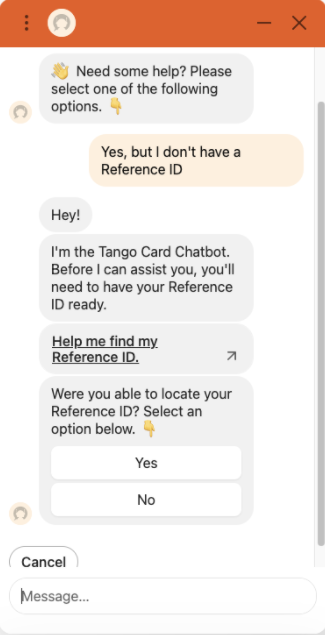Many business challenges are far too complex for any one team to tackle on their own.
The team at Tango Card, a leader in fulfilling digital rewards and incentives, has applied this wisdom in a number of ways since the start of the pandemic.
More specifically, they’ve brought together their business technology and product teams—and in some cases, additional functions—to tackle issues that significantly impact the client experience and their ability to scale the business.
For any challenge they aim to solve, they work through the following:
- Understanding where they are today
- The quantitative objectives they want to meet
- A collaborative plan for meeting those objectives
Adam Cole, the Director of Business Systems, and Elliot White, the Head of Product, walked through a few of the ways they’ve applied this cross-functional approach during their recent session at Magic: “BT + Product: Evaluating Technology That Works for Everyone.”
Let’s take a look at some of those examples.

How to turn your product into a hub for automations
We’ll share real-world examples from Tango Card, CyCognito, and Unanet.
1. Building powerful integrations without relying on developers
In teeing up this example, White gave context on Tango Card’s business and their need to integrate the platform with other apps:
Generally speaking, Tango Card powers rewards and incentives programs that target employees (via work from home stipends, service awards, spot awards, etc.) or clients (via referral programs, customer appreciation, etc.).
Carrying out these employee and client programs requires data that’s in specific apps. In the case of clients, contact information lives in a CRM; while employee contact information resides in an HRIS.
This means that in order to streamline the process of rewarding both sets of stakeholders, they’d need to integrate Tango Card with each type of app.
White and his team initially started by building out these integrations natively. But this approach came with significant challenges.
White went on to explain that once a native integration went live—which took their team as long as a year to accomplish—, they would need to engage significant resources in maintaining the integration and in sales enablement.
These factors led White’s Product team to reassess their approach to integration.
They decided to partner with their colleagues in Business Technology to adopt Workato’s Embedded iPaaS, where they would use their Rewards as a Service (RaaS) API to build integrations and automations—and the early results have been promising.
Within their first year, they’ve implemented a Slack chatbot for employee spot awards (“Slack Reward Bot”), an integration with Namely to automate service anniversaries, and an integration with HubSpot to help customers integrate rewards and incentives into their marketing automation activities.
Perhaps best of all, the process of implementing and maintaining these integrations has required zero engineering hours—allowing the team to focus on the critical tasks that they’re uniquely equipped to handle.
Related: 3 key benefits from using an embedded integration platform
2. Leveraging a chatbot to manage support’s volume of cases
As the pandemic emerged, the demand for digital gifting rose substantially.
Employers looked to incentivize employees to get the vaccine; and they wanted to provide gift cards that employees could use for improving their home office. All the while, customer-facing teams needed to use digital gifting more than ever, whether it was for engaging prospects or keeping clients happy.
This rise in demand was clearly a positive development for Tango Card’s business, but it also introduced a new issue: Their clients were filing an unprecedented number of support cases.
This led support to quickly become overwhelmed, and it forced them take a long time in resolving each case. But before the situation got out of hand, the product, BT, engineering, and marketing team all partnered with support to identify and implement a solution.
The teams decided that as a first step, they would analyze the cases coming in to better understand how many could be handled in a way that was self-serve—versus sales-assisted.
As it turns out, this was up to 50% of the cases.
This motivated the team to brainstorm a solution that went beyond their help center, which they’ve already built out at great length. And they ultimately landed on a chatbot on their site that could help clients work through their challenges.
Here’s how their team set about implementing it:
Product and engineering built an API endpoint to help their colleagues in support perform less data entry and to get their data validated; in addition, they used that API endpoint to power the chatbot. More specifically, when the chatbot asks for the client’s Reference ID, it can look up the response via the API and, based on what’s found, the chatbot can provide a personalized experience that solves the client’s issue faster.

This has led to a myriad of benefits for their team. For starters, 90% of visitors stay with the chatbot, which shows that it’s able to keep the visitor engaged.
Furthermore, 70% of chats don’t require handoffs with support. This enables support to focus on more interesting and critical cases. And even when a case gets handed off, they now have more information than before, allowing them to resolve it faster.
The chatbot was initially rolled out in their help center, but they quickly added it to their main site and in-product; and since the chatbot has even more info in the latter, it’ll be able to provide even smarter support.

